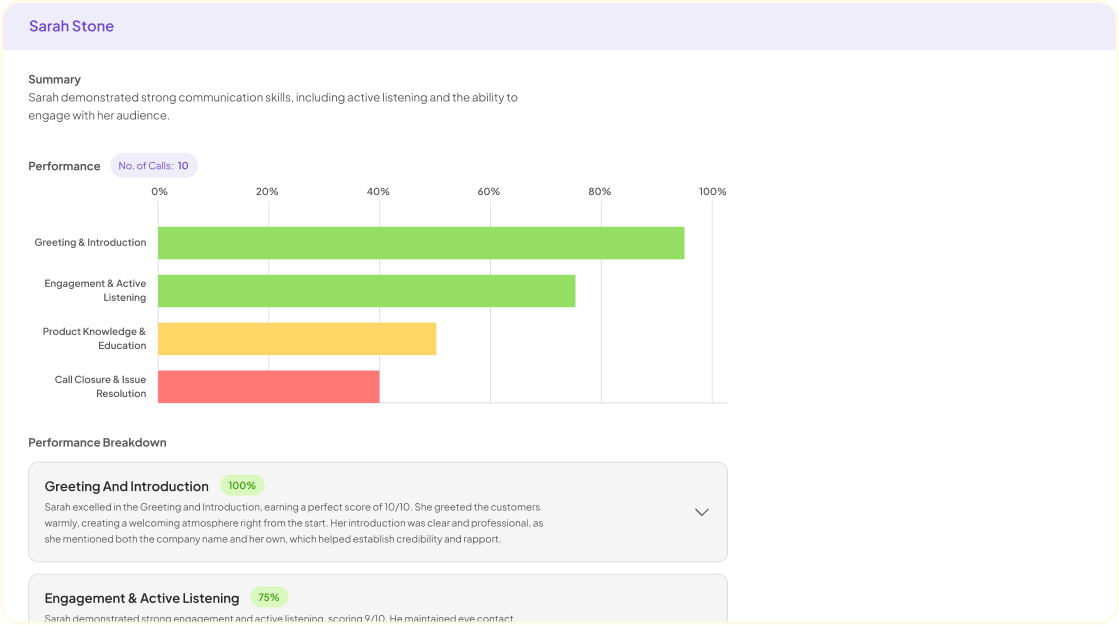
Video content is increasingly central to education, content creation, and enhancing accessibility for diverse audiences. But making these videos accessible and useful for further analysis often requires transcription—a process that involves converting spoken words into text. Whether you’re a researcher extracting insights from interviews or a content creator seeking to repurpose material, transcribing video content is essential for effective documentation and sharing.
However, manual transcription can be time-consuming and prone to human error. This is where AI-driven transcription tools come into play. These tools use advanced technologies like speech recognition and natural language processing to automate the transcription process, saving time and boosting accuracy. AI also adds a layer of analysis by turning raw transcripts into meaningful data, helping users uncover hidden patterns, sentiments, and themes.
But with so many AI tools available, how do you choose the right one? In this guide, we’ll walk you through the steps of transcribing a video and analyzing the resulting transcripts using AI. By the end, you’ll understand how AI-powered tools like Insight7 can streamline these processes, enabling you to produce better content, improve accessibility, and make data-driven decisions.
Understanding the Basics
Before diving into the step-by-step process, it’s essential to understand what transcription entails and how AI plays a role. At its core, transcription is the process of converting speech into text, which has traditionally been done manually. However, with advancements in AI, particularly in speech recognition and natural language processing (NLP), this process has become more efficient and accurate.
AI transcription tools like Insight7 have revolutionized the way we handle video transcripts by automating the entire process. These tools use speech-to-text algorithms to identify spoken words in a video, converting them into text much faster than manual efforts. Furthermore, NLP enables AI to recognize context, accents, and different languages, making it more reliable in handling complex content.
One of the key benefits of using AI for transcription is time-saving. For instance, a manual transcription of a one-hour interview might take 3-5 hours, whereas AI tools can produce a rough draft in minutes. Additionally, AI analysis allows you to extract actionable insights from these transcripts, such as keyword identification, sentiment analysis, and trend recognition. Therefore, incorporating AI into your transcription process doesn’t just make it faster—it enhances the overall quality of the analysis.
Step-by-Step Guide
Step 1: Choose Your Tools
The first step in transcribing any video is selecting the right AI tool for the job. When choosing, consider factors such as accuracy, ease of use, cost, and additional features. Tools like Insight7 stand out for their ability to handle bulk transcription, offer qualitative data analysis, and ensure enterprise-grade data security. Its project-based research repository and collaboration features make it an excellent choice for businesses that need comprehensive reporting and secure sharing options.
Step 2: Prepare Your Video
Before transcribing your video, make sure it’s ready for processing. The quality of your video’s audio is crucial for accurate transcription. Poor audio—whether due to background noise, low volume, or inconsistent speech—can result in errors, even with the best AI tools. Here are some tips to ensure your video is well-prepared for transcription:
- Check Audio Quality: Ensure the audio is clear and background noise-free.
- Use Supported File Formats: Ensure your video is in a format supported by the transcription tool (e.g., MP4, MOV, etc.).
- Segment Long Videos: If your video is lengthy, consider splitting it into smaller, more manageable sections for easier transcription.
Step 3: Transcribe the Video
Once your video is ready, you can begin the transcription process. With a tool like Insight7, upload your video file, select the appropriate language and transcription settings, and let the AI do the work. The system will automatically convert spoken words into text, providing you with an initial transcript draft.
AI transcription tools are designed to handle different accents, dialects, and speech speeds, offering more flexibility than manual methods. If needed, you can also add timecodes to the transcription, which is particularly useful for media professionals or those working with longer video content.
For instance, one common question is: “Can AI make a video transcript?” The answer is yes—AI tools like Insight7 can transcribe any video format as long as the audio is clear and the file is compatible with the system. Another question is “Is there a free AI to transcribe video to text?” Yes, you can transcribe up to 3 video files free per month with Insight7. However, you would need to pay a premium to access more transcriptions. View our pricing plans.
Step 4: Edit the Transcript
While AI transcription tools are highly accurate, they aren’t perfect. This is where manual review comes into play. Once the transcription is complete, reviewing and editing the text for any discrepancies or errors is essential.
Common issues to look out for include:
- Misheard Words: AI may misinterpret certain words, especially if there are accents or unclear speech.
- Punctuation Errors: Ensure proper punctuation, as AI might not always recognize the correct breaks in speech.
- Technical Jargon: If your video contains specialized terminology, double-check that these terms are transcribed accurately.
Taking the time to correct these errors manually will ensure that your transcript is as accurate as possible, which is especially important if the transcript will be used for further analysis or publication.
Step 5: Analyze the Transcript
Once you’ve edited the transcript for accuracy, you can proceed to the analysis phase. AI tools like Insight7 provide several features that make transcript analysis more efficient and insightful. By leveraging Natural Language Processing (NLP) and machine learning, these tools can automatically identify patterns, sentiments, and themes within the transcript.
Here’s how you can analyze your transcript with AI:
- Extract Keywords: AI can automatically highlight the most frequently used terms in the transcript, helping you quickly identify key topics or themes. This feature is particularly useful for market research, as it reveals what topics are most discussed in customer feedback, interviews, or focus groups.
- Perform Sentiment Analysis: AI tools can gauge the emotional tone of the transcript, determining whether the overall sentiment is positive, negative, or neutral. This helps understand customer reactions to a product or service or in assessing the tone of feedback during interviews.
- Identify Themes and Trends: Insight7 can also group related keywords together to uncover larger trends in the transcript. This thematic analysis is essential for researchers seeking insights from qualitative data, as it highlights recurring ideas or concepts that might not be immediately obvious.
Some users might ask, “What AI can summarize a transcript?” Insight7 and other AI transcription tools can summarize lengthy transcripts by distilling key insights and trends. This is incredibly helpful for users who need to digest large amounts of information quickly.
Insight7 Core Features:
- Bulk Transcription Capability: Upload multiple videos for transcription, significantly speeding up the workflow for large projects.
- Automated Qualitative Data Analysis: Extract insights from transcripts with built-in AI, identifying themes, sentiments, and key terms effortlessly.
- Comprehensive Reporting: Generate customizable reports that present findings clearly and concisely.
- Enterprise-Grade Data Security: Ensure your video transcripts and analysis remain private and secure with top-tier encryption standards.
- Project-Based Research Repository: This repository organizes all your research projects in one place, making it easier to manage and retrieve data.
- Collaboration and Sharing: Share transcripts and insights with your team or stakeholders, facilitating easier collaboration.
Bulk Transcribe Interviews, calls, & conversations in minutes
Common Pitfalls to Avoid
Even with AI tools, several common mistakes can occur during transcription and analysis. Here are a few to be mindful of, along with solutions to avoid them:
- Overlooking Audio Quality: As mentioned earlier, poor audio quality can lead to transcription inaccuracies. To prevent this, always ensure the audio is clear before transcription.
- Failing to Edit the Transcript: Relying solely on AI for transcription can result in errors, especially in videos with technical jargon or heavy accents. Always take the time to review and edit the transcript for the best results manually.
- Ignoring Transcript Analysis: Transcription is just one part of the process. To gain real value from your video content, it’s essential to analyze the transcript. AI tools like Insight7 allow you to dive deeper into your data, providing insights that might otherwise go unnoticed.
- Not Using Timecodes: Timecodes are essential for navigating the transcript for longer videos or interviews. Neglecting to include them can make it harder to locate specific sections in the video later on.
If you’re wondering, “Can I use ChatGPT to transcribe a video?” the short answer is no—ChatGPT currently cannot transcribe videos directly. However, you can use AI transcription tools like Insight7 to generate a transcript and then use ChatGPT or similar models to summarize or analyze the text.
Tips for Success
Transcribing and analyzing videos with AI can dramatically improve your workflow, but following best practices is important for the best results. Here are some expert tips to ensure success:
- Choose High-Quality Tools: While many AI transcription tools are available, it’s important to select one that suits your needs. Look for tools that offer additional features like sentiment analysis, keyword extraction, and customizable reporting. Insight7, for example, transcribes and provides a wide range of analysis features that make it ideal for businesses and researchers.
- Pay Attention to File Formats: Before uploading your video to the transcription tool, make sure it is in a compatible format (e.g., MP4, MOV). Unsupported formats can lead to errors or delays in processing.
- Review Transcripts Thoroughly: Even the most advanced AI tools can make mistakes, especially with tricky accents or technical terms. Always review and edit the transcript to ensure accuracy before proceeding to analysis.
- Leverage AI for Analysis: Don’t stop at transcription—use AI tools to gain deeper insights from your transcripts. Whether it’s identifying trends, performing sentiment analysis, or generating reports, AI can make your qualitative data more actionable.
- Time Management: Transcription and analysis can be time-consuming, but AI can significantly reduce the amount of time spent on these tasks. By automating parts of the process, you can focus more on drawing insights and making decisions based on the data.
- Utilize Timecodes for Better Navigation: Timecodes can save you time and effort when locating specific parts of the transcript, especially for long videos or interviews. Many AI transcription tools offer the option to add timecodes, so take advantage of this feature.
Finally, if you’re looking for free options, users often search for, “Is there a free AI to transcribe video to text?” While there are free tools available, many are limited in functionality. Insight7 provides a more robust solution for enterprise users with advanced needs, though free trials or limited-access plans may be available depending on the tool.
Conclusion
Transcribing a video and analyzing its transcript with AI tools like Insight7 can greatly improve your work’s speed and quality. From choosing the right tool to editing the final transcript, AI makes it easier to turn video content into actionable data. Whether you’re working on research projects, creating content, or improving accessibility, mastering these skills can lead to more effective outcomes.
With Insight7, you can access a powerful platform designed for qualitative data analysis and transcription. Its features—ranging from bulk transcription to comprehensive reporting—provide everything you need to handle large projects securely and efficiently.
Ready to try it for yourself? Sign up for Insight7 today and experience the benefits of AI-driven transcription and analysis.
Transcribe & extract insights from interviews. At Scale.



